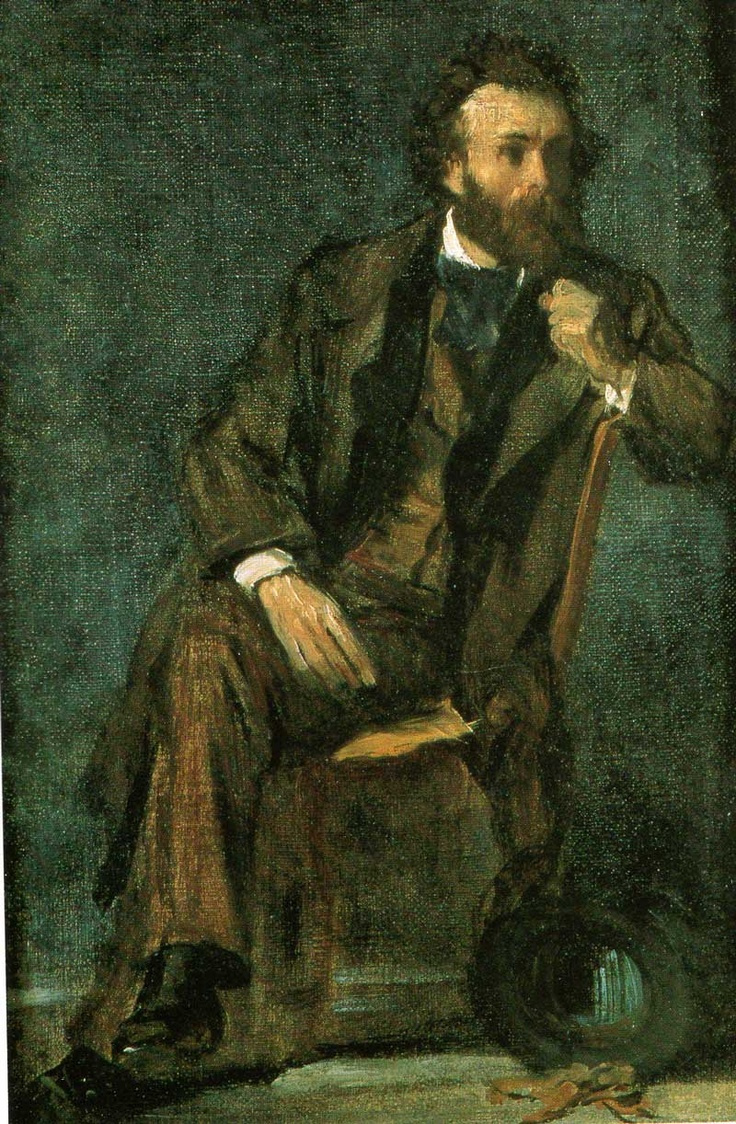 Courtesy of Wikimedia Commons
Courtesy of Wikimedia Commons
Located in the heart of Paris, down an offbeat path in the 9th arrondissement, the Musée Gustave Moreau, the converted mansion of the artist himself stands as a testament to the artistic genius and extravagant life of Moreau. The location of the museum within his former residence and art studio offers visitors a uniquely immersive experience of the conditions and circumstances that contributed to the composition of his extraordinarily intricate, decadent work. If you’ve been yearning to see Monet’s studio at Giverny but don’t have the time to go or are simply interested in bearing witness to an artist’s studio or have never heard of Gustave Moreau and are simply curious, this museum has something for everyone.
The museum itself affords the audience a rare glimpse into the eclectic, mythological, and biblical references that populate the extraordinary paintings of Gustave Moreau, a visionary artist whose work contravened convention and displayed an incredible wealth of ornate imagination. Born in Paris in 1826, Moreau was deeply influenced by the Romantic and Symbolist movements, the former exemplified in the work of Eugène Delacroix, the latter by Edvard Munch, and later Gustave Moreau himself. Both movements favored complex lighting, drawing from the chiaroscuro of the baroque Renaissance period while modernizing it through new techniques and forms of imagery that were often more abstract or allegorical than mimetic representations, a Platonic ideal of art. A useful book to read before visiting the museum would consist of “Against Nature,” by Joris-Karl Huysmans, an entertaining exegesis on the decadent movement which coincided with that of the symbolists.
As for the museum itself, it contains a grand entrance hall that extends to Moreau’s private chambers all elegantly composed in neoclassical style. The upper floors of the museum contain the artist’s studio and intended gallery for his works which span floor to ceiling adorning the wall like a shrine or a hoarder's paradise and much to the ire of many academics (read: me) who would prefer a more ordered, chronological arrangement to provide a timeline that reflects the development of the consanguineous symbolist and decadent movements. The unorganized collection is one of the hallmarks of the Gustave Moreau museum however and demonstrates the sheer diversity and breadth of his interests within his work. Spanning several floors and numerous rooms, the monumental canvases vary from watercolors to oil paintings, culminating in his pre-psychedelic yet psychedelic nonetheless, masterpiece, “Jupiter and Semele,” the delicate intricacy of “The Apparition,” and a panoply of others.
 Courtesy of Wikimedia Commons
Courtesy of Wikimedia Commons
The museum demonstrates the influence of the symbolist movement, a late 19th century artistic and literary movement that sought to express the ineffable through metaphor and symbolism. Moreau is considered a leading figure within the latter movement, his work often explores themes of spirituality, mysticism, and the unconscious mind resonating with the Symbolist importance of transcendence of the material world. If this sounds massive, ambiguous and heavily intricate, that’s because it is and as such, I would highly recommend allocating a sufficient amount of time to take in the enormous collection with its endless references, allegories, and details.
In a city renowned for its artistic riches and niches, the Musée Gustave Moreau epitomizes late 19th century painting and interior style as well as the eclecticism of French art. With its unparalleled collection, historic background, and totalizing immersion into the world of symbolism, the museum is truly one of a kind and should definitely be on your Paris bucket-list.